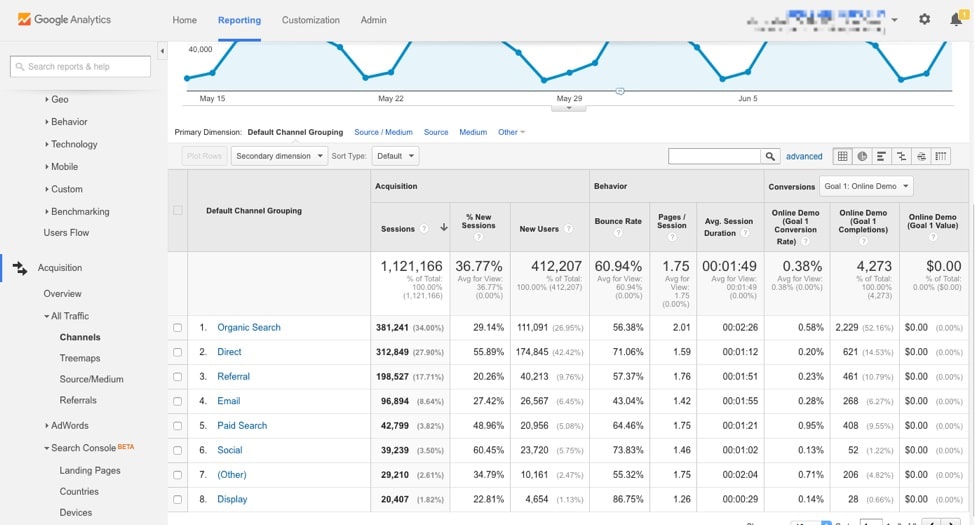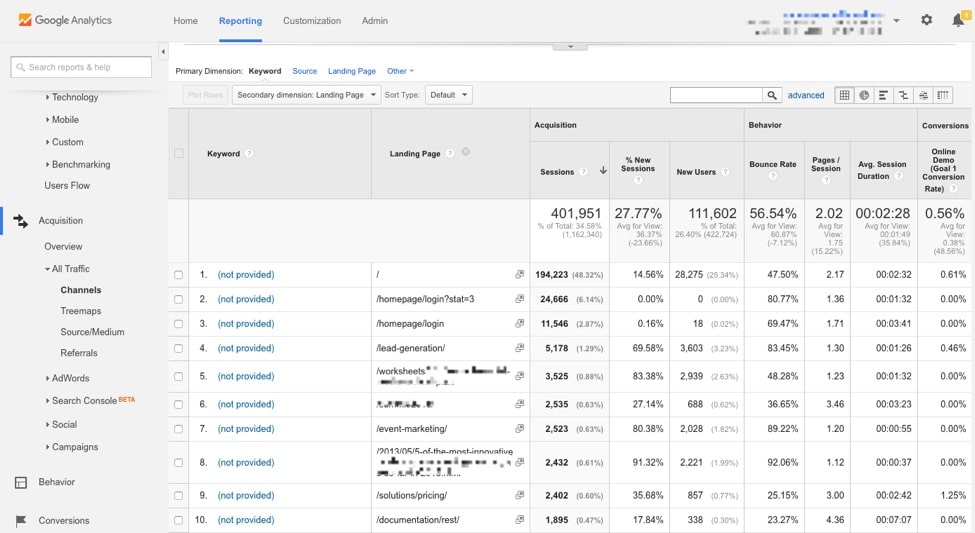One concern I hear over and over again from marketing managers and executives is accurately and objectively measuring SEO progress and ROI. Team members in the trenches track rankings, bounce rates, engagement, etc., but ultimately you need to know what’s really driving revenue, and the C-suite wants the numbers to prove it.
But modern SEO hasn’t been the easiest thing to limit to a static set of metrics. Traditionally, SEO efforts that could be based on more technical strategies were easier to measure. Effective SEO today is much less technical, so we need to adapt our methods.
While search engines are always getting better (which means your content should always get better), they always focus on the same end goal, which means good modern SEO is really a long-term strategy. How do you measure your improvement efforts, and what do you show the C-suite in the meantime?
The need for some sort of concrete answer has led marketers to seek out a lot of vanity metrics that look good (or don’t) on paper, but don’t tell the true brand SEO story on their own. Bounce rate, time on site, clicks, and even to some extent an isolated view of search rankings are not directly related to revenue and do not provide an accurate view of the value of an SEO campaign.
Maximizing your SEO opportunities and providing reports that executives really care about means focusing on the right metrics:
Keyword Ranking Are Helpful, Sometimes
“Where do we rank for our top keywords?” It’s the first (and sometimes last) SEO thought of every CMO and business owner, and often the primary metric by which SEO efforts are measured.
When we consider the big picture of SEO, it’s a good consideration, but especially in day-to-day SEO work, keyword ranking shouldn’t take up too much time and attention. There are many reasons for this:
Search results are personalized. Google considers factors such as browsing history, physical location, demographics, and personal preferences when distributing search results. When you search Google for your keyword terms, you’re probably not seeing the same results that your target audience is seeing when they search for those same words.
All keywords are not created equal. Reporting that your brand is now on the front page for six of your top 10 keywords might be a good excuse to buy the marketing team lunch on Friday, but that’s about it. The importance of each individual keyword depends on the search volume and its relevance to your business. The resources should be focused on the keywords that really have an impact on the final result.
How to monitor keyword ranking appropriately:
If you must use Google, at least use a de-personalized search to remove (most of) the personalization of your search results. If you’re using another SEO tool to monitor rankings, pick one and stick with it. Each tool uses a slightly different process to determine your “real” ranking, so be consistent with a tool to get results that you can use.
When monitoring rankings and tracking changes, remember to look at the big picture. Resist the urge to fight after every little change in ranking by creating a report that analyzes high-value keywords and a separate report for low-value keywords, so you can more easily focus on the keywords that actually convert.
Likewise, be sure to note any page numbers and/or ranking positions that change so you can emphasize minor changes on page one rather than major changes on page four.
Organic Traffic is a Better SEO Metric than Ranking
Search traffic is the real goal behind improving search engine rankings, so more emphasis should be placed on your efforts here. Any improvement in keyword rankings could be the result of standard search engine fluctuation, but increases in organic traffic are concrete evidence that the SEO work is paying off.
How to monitor traffic from organic search:
First, make sure you’re set up with Google Analytics. It is a free tool, with a premium feature priced for enterprise-level organizations. The Premium version mainly offers more support and service and more specific numbers, while the free version “displays” data to provide more rounded numbers. However, the data you get is sufficient for your purposes here.
In Google Analytics, use the left column to navigate to Acquisition > Overview > All Traffic > Channels. The table at the bottom of the page details where your website traffic is coming from and there is a row for “Organic Search”.

Obviously, the organic traffic number includes both branded and unbranded traffic. (Branded traffic comes from keywords that use your brand name, eg “marketing software”, while unbranded traffic comes from keywords that don’t use, eg “marketing software” automation of marketing).
Since Google removed keyword data, it’s incredibly difficult to break down organic traffic data into branded and unbranded categories (although there are some great tools out there that can help). The best way in Google Analytics is to click Organic Search in the first column of the table above and select Landing Page from the Secondary Dimension dropdown above the table.

The keywords are, surprise, “(and not provided)”, but we can get some clues from the landing pages they point to. For the home pages and login pages (lines 1-3 above), we can assume that most of this traffic came from branded searches because there is no keyword focus for these pages other than the name Of the brand.
Traffic to blog posts and resource content (lines 4-8 above) likely came primarily from unbranded search traffic because they focus on a solution or information that Google would provide as a result of a more generic query. Rough estimates to be sure, but we’re at Google’s mercy when it comes to the data they choose to share.
The Bottom Line: SEO Conversions and ROI
The point of high search rankings is traffic, but the point of traffic, to see the process through to the end, is sales. Every website visitor doesn’t convert into sales, so it’s important to monitor the conversion rate of your SEO efforts.
All conversion points should be considered, which vary depending on your industry and business model: from eBook downloads to online purchases. Multi-touch attribution should also be considered, as not every visit will convert, but every visit can lead to a conversion later on.
How to monitor conversions and ROI from SEO efforts:
This process can start in Google Analytics by setting goals. Analytics has three options for setting goals:
Goal Templates: These templates are organized by categories (Revenue, Acquisition, Inquiry, and Engagement). If your account is associated with a specific industry on Google, you’ll also see templates for specific industries. Each template can be edited.
Custom Goals If you prefer, you can create a custom goal from scratch. You just need to decide if you want to create a goal based on which pages a user views, how long a user spends on a page, how a user interacts with your site, or how many pages a user views per session.
Smart Goals: If you use AdWords, you can take advantage of machine learning programs to create Smart Goals. Enabling smart goals allows the program to track website visits, track which ones turn into conversions, use this information to score visits, and automatically translate the best ones into goals. Your goals become the actions that typically lead to conversions, and Google Analytics tracks them for you.
Completing organic traffic goals can tie your SEO efforts to your income stream. When you start using modern SEO strategies to drive traffic to a specific landing page (one with a good conversion rate), you can see the views and time on that page increase.
These three metrics (keyword rankings (with important caveats), organic search traffic, and organic search conversions/ROI) can give you the information you need to drive improvement and growth in your SEO strategy. They will also provide meaningful numbers to report to the C-suite because they are rooted in a modern understanding of SEO.
